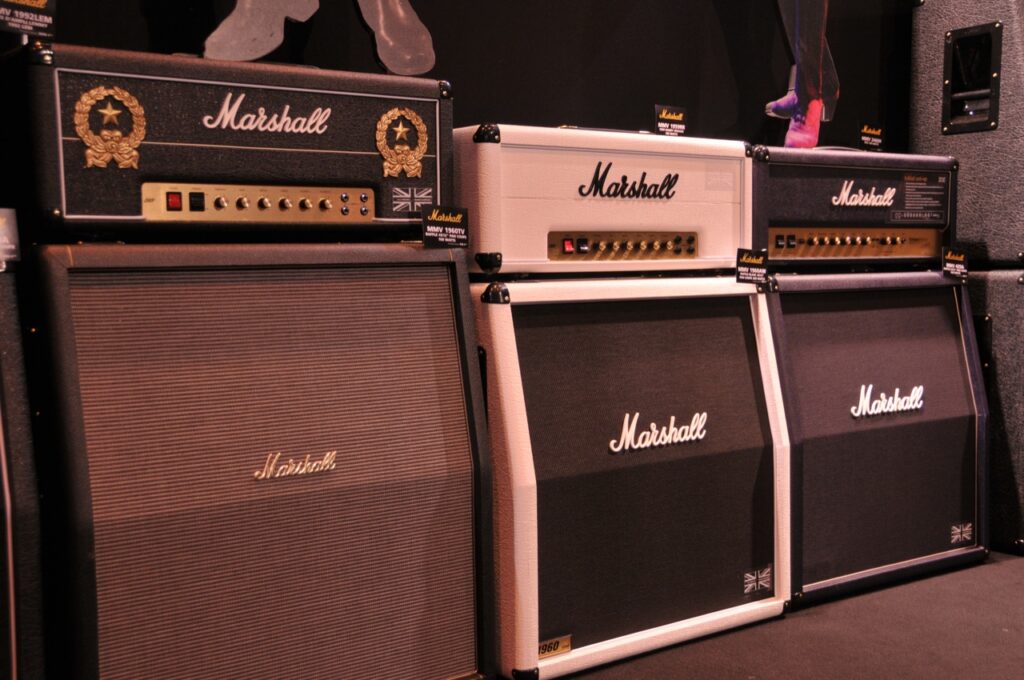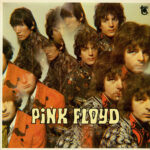When you’re stepping into the world of electric guitar, one of the most exciting purchases you’ll make is your first guitar amplifier. It’s not just a box that makes your guitar louder—it’s a key element in shaping your sound, adding character, and making your guitar sing. Choosing the right amp can be overwhelming with the range of options available, so this guide will break down everything you need to know to make the best choice for your first guitar amp.

Contents
- 1 Why Does Your First Guitar Amp Matter?
- 2 Types of Guitar Amplifiers: Know Your Options
- 3 What Size Amp Should You Buy?
- 4 Essential Amp Features for Beginners
- 5 Tube vs. Solid-State: Which is Right for You?
- 6 Top Brands to Consider for Your First Guitar Amp
- 7 Budget: How Much Should You Spend on Your First Amp?
- 8 Where to Buy Your First Guitar Amp
- 9 Final Tips for Choosing Your First Guitar Amp
- 10 Conclusion: Find the Amp that Inspires You
Why Does Your First Guitar Amp Matter?
A guitar amplifier isn’t just about volume; it has a major role in your overall tone. The type of amp you choose will influence how your guitar sounds, whether you’re playing at home, jamming with friends, or performing in a small venue. Your first amp will likely serve as your introduction to electric guitar playing, so you want something that enhances your experience and inspires you to play more.
Types of Guitar Amplifiers: Know Your Options
There are four main types of guitar amps to consider: solid-state amps, tube amps, modeling amps, and hybrid amps. Each type has its own unique features, sound, and price range, so let’s explore what sets them apart.
1. Solid-State Amplifiers
Solid-state amps use transistors to amplify sound, and they are generally more affordable, durable, and reliable. They’re perfect for beginners because they require less maintenance and are less fragile than tube amps. Solid-state amps also provide a clean and consistent tone, making them ideal for practice.
Pros:
- Affordable and beginner-friendly
- Durable and low-maintenance
- Consistent clean tone
Cons:
- Lacks the warmth and richness of tube amps
- Somewhat sterile sound for purists
2. Tube Amplifiers
Tube amps are the holy grail for many guitarists. They use vacuum tubes to amplify sound, providing a warm, rich tone that many musicians crave. They react to your playing dynamics in a way that solid-state amps can’t, delivering natural overdrive and harmonic richness. However, tube amps are typically more expensive and require regular maintenance.
Pros:
- Warm, dynamic tone
- Natural distortion and harmonic richness
- Great for rock, blues, and jazz players
Cons:
- Expensive and fragile
- Requires regular tube replacements
3. Modeling Amplifiers
Modeling amps use digital technology to simulate the sounds of various types of amps and effects. These amps are highly versatile, offering a wide range of tones and effects in one package. Many modern modeling amps also come with built-in effects like reverb, delay, and distortion, allowing you to experiment with different sounds without needing extra pedals.
Pros:
- Versatile and cost-effective
- Wide range of tones and effects
- Great for players who want to explore different styles
Cons:
- Sound can be too processed for some players
- Lacks the organic feel of tube amps
4. Hybrid Amplifiers
Hybrid amps combine the best of both worlds, featuring a tube preamp and a solid-state power amp. This provides the warmth of tubes with the reliability of solid-state technology. They are more affordable than full-tube amps and offer some tonal benefits without the high maintenance costs.
Pros:
- Warm sound of tubes with solid-state reliability
- Less maintenance than tube amps
- Affordable
Cons:
- Doesn’t fully capture the feel of tube amps
- Not as versatile as modeling amps
What Size Amp Should You Buy?
Now that you know the different types of amps, it’s important to consider size and wattage. The size of your amp should match your playing environment. Here’s a breakdown of the most common amp sizes:
Practice Amps (5-20 watts)
If you’re going to be practicing at home, a smaller amp is ideal. Practice amps typically range from 5 to 20 watts and provide plenty of volume for bedroom playing. These amps are portable and affordable, making them great for beginners.
Gigging Amps (20-50 watts)
If you’re planning to perform in small venues or jam with a band, you’ll need a little more power. Gigging amps usually fall between 20 and 50 watts. At this wattage, you’ll get enough volume to cut through the mix in a live setting without overpowering the rest of the band.
High-Wattage Amps (50+ watts)
For those planning to play larger venues or record in a professional studio, high-wattage amps are essential. These amps provide a huge amount of volume and headroom, but for beginners, this might be overkill unless you plan to upgrade your rig quickly.
Essential Amp Features for Beginners
When you’re buying your first guitar amp, certain features can enhance your playing experience. Here are a few essential features to look for:
Built-in Effects
Many modern amps come with built-in effects such as reverb, delay, chorus, and distortion. Having these effects built into your amp allows you to experiment with your sound without the need to buy separate pedals.
Headphone Output
A headphone output is a lifesaver for practicing quietly. You can plug in your headphones and practice anytime without disturbing your neighbors or family members.
Auxiliary Input
An auxiliary input allows you to connect your phone or computer to your amp, so you can jam along with backing tracks or your favorite songs.
Equalization (EQ) Controls
Most amps come with basic EQ controls, allowing you to adjust bass, mid, and treble frequencies. Having control over your EQ can help you tailor your sound to match your playing style and genre.
Channel Switching
Channel switching allows you to switch between clean and distorted tones. This is especially useful if you want to switch between rhythm and lead tones without needing external pedals.
Tube vs. Solid-State: Which is Right for You?
One of the biggest debates when choosing a guitar amp is tube vs. solid-state. Here are some factors to consider:
- Budget: Tube amps are generally more expensive, so if you’re on a tight budget, a solid-state or modeling amp might be a better choice.
- Sound Preference: If you love classic rock, blues, or jazz tones, a tube amp might be worth the investment. However, if you’re into modern rock, metal, or pop, a solid-state or modeling amp may be more suitable.
- Maintenance: Tube amps require regular maintenance, including tube replacements. Solid-state amps are virtually maintenance-free, making them ideal for beginners.
Top Brands to Consider for Your First Guitar Amp
While there are many amp manufacturers on the market, some brands have stood the test of time when it comes to delivering quality amps for beginners. Here are a few to consider:
Fender
Fender is a legendary brand, and their amps are known for their clean tones and affordability. Their Fender Mustang series is a popular choice for beginners, offering versatility with built-in effects and modeling features.
Marshall
Marshall amps are synonymous with rock and metal. If you’re into those genres, the Marshall MG series or DSL series offers affordable options that deliver that classic Marshall crunch.
Vox
Vox amps, especially the AC series, are known for their chiming, British tone. They’re excellent for clean and crunchy tones, making them ideal for indie and classic rock players.
Orange
Orange amps are known for their distinctive design and punchy, high-gain sound. If you’re a fan of hard rock or metal, the Orange Crush series is a great entry point.
Boss
Boss is a leader in the digital amp space. Their Katana series is one of the best modeling amps on the market, offering excellent value with its variety of tones, effects, and wattage options.
Budget: How Much Should You Spend on Your First Amp?
You don’t have to spend a fortune on your first amplifier. A decent beginner amp will generally cost between $100 and $300. Keep in mind that investing in a higher-quality amp might save you money in the long run, as it could last for years before you need to upgrade.
If you’re on a tight budget, solid-state and modeling amps are typically more affordable than tube amps. Brands like Fender, Marshall, and Orange offer great amps in this price range, and you can also find some excellent options second-hand.
Where to Buy Your First Guitar Amp
Now that you know what to look for, where should you buy your amp? Here are a few options:
1. Local Music Stores
Visiting a local music store allows you to test different amps in person and get expert advice from staff. Before committing, you can try out the amp with your guitar and hear how it sounds.
2. Online Retailers
If convenience is your priority, online music retailers like Sweetwater, Guitar Center, and Thomann offer a wide range of options. Make sure to read reviews and check return policies in case the amp doesn’t meet your expectations.
3. Second-Hand Markets
You can also find great deals on second-hand amps from platforms like eBay or Reverb. Just make sure to check the condition of the amp and buy from a trusted seller.
Final Tips for Choosing Your First Guitar Amp
- Test the amp: If possible, try the amp with your guitar before buying it. This will give you a sense of how the amp interacts with your instrument.
- Start small: For beginners, a smaller amp is often more than enough. You can always upgrade as your playing evolves.
- Don’t be overwhelmed by features: As a beginner, focus on what you need. Too many effects and settings can be confusing.
- Stay within budget: There’s no need to overspend on your first amp. Focus on quality rather than fancy features.
- Ask for advice: Whether from friends, teachers, or local store staff, getting input from experienced players can help you make an informed decision.
Conclusion: Find the Amp that Inspires You
Buying your first guitar amp is a major step in your guitar-playing journey. The right amp will inspire you to play more, experiment with new sounds, and push your creativity. Whether you’re drawn to the warmth of a tube amp or the versatility of a modeling amp, take the time to research and try out different options before making your decision.
Remember, the best amp for you is the one that fits your style, budget, and playing environment. So turn it up and enjoy the ride!











